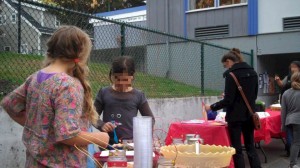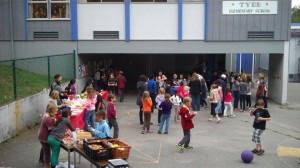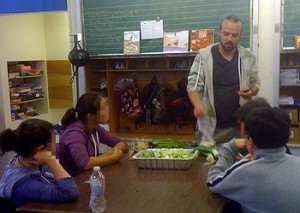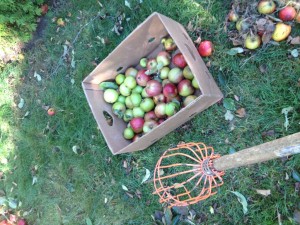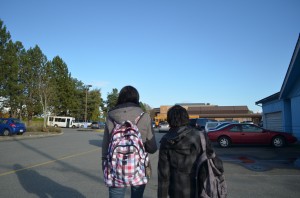This is my last post as a reporter for LFS 350 for this year. I’m excited to see what things change as years go on and if this blog will be well maintained in the future. As a reflection on the overall course, I’ll be taking my time to really break down what I feel about the course and things I’ve personally learned. I’d like to thank Masoumeh the chance for giving me opportunity to be a reporter. I should warn readers that I’ll be including both positive and negative views about the course, and my experiences as part of group 21 and as a reporter. My entire views can be summed in two words: Windows and Mirrors, which I’ll be explaining below. Throughout the post I’ll also be using many of my own photos to illustrate my thoughts so I’ll hope that you’ll enjoy them as much as I enjoyed taking and processing them. Lets begin!
Windows.
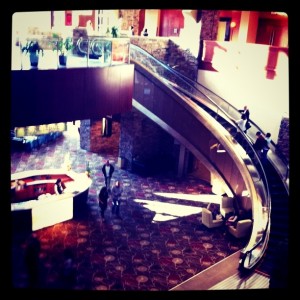
The LFS series of courses began for me back in LFS 250. This is probably because I barely paid attention back in LFS 100. In hind sight I’m really thankful I passed that class. But back to he main topic, LFS 250, gave me the first look into what LFS “really meant”. Coming from Alberta, a province that thrives off Oil and Gas, and from a conservative home and school, I rarely took time to consider the finer details of the larger picture. Much more though, I never considered “food” to be an issue greater than “food security”. I was really amazed to see all the dimensions of food issues and the causes of each. LFS 350 further gave me new information about food. Interesting as it was, I still often found it hard to relate to the knowledge the many FNH or Dietetics students in the class. Being an applied animal biology major, I was often confused or blind to the facts when it came to nutritional disparities or discussions about the importance of specific nutrients. But this overall, I feel didn’t take away from my LFS 350 Experience.
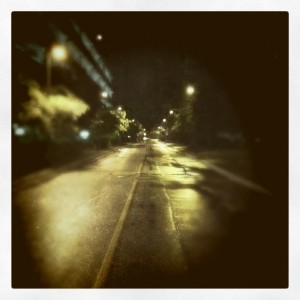
The LFS 350 class, and my project continued to immerse me into a world I before never really understood. My group project dealt with creating a survey based on food knowledge, so needless to say I learned a lot. Many of the readings were based on the foods or systems focused on addressing food concerns, all of these helped me understand and see more perspectives. As cherry to the sundae, I was granted the opportunity to be a reporter and was able to see what many groups were doing. Worlds and scenes and ideas opened up to me, like curtains removed from a window. From the inside, I started to look outwards at all these ideas. I started to look through the windows of my previously formed views. Ideas I’ve closed curtains to in the past, re-emerged with scenes of intrigue. Furthermore having an opportunity to work on projects allowed me to open the door and experience these different things I saw through the windows. But alas, I can’t spend all the time outside, so I at this point in the term, I return inside to find only mirrors facing me.
Mirrors.

Reflecting, is the first word that comes to mind when most people thing mirrors, and as cliche as it is… thats exactly how I feel. Aside from having all these new views and experiences laid at my food step, I had also found the need to reflect and see what parts of this grand picture was relevant to me and to see the highs and lows of the process. I guess with any reflection, more often than not, the negative ideas are easier to see than the positive. Such was the case as I reflected on the term thus far.
More often than not, I felt displaced, not excluded… displaced. My animal biology major led me to feel disconnected from the majority of the nutrition class. This feeling further intensified as my group was all nutrition students as well. The group and class as a whole was warm, and welcoming, but in the end, being a person lacking some shared knowledge, it is inevitable I felt displaced. The feeling of belonging slowly returned to me as the term went on, until CSL hours were enforced. I am really happy and thankful to be reporter, but being a reporter further displaced me from my team as I started being responsible for different things than them. This caused a sense of displacement to temporary return, but it didn’t last long. As I spoke with other groups, I started to see the fluidity and integration of all the groups into this giant mesh. The combining each groups projects future possible outcomes, I saw a grand image that made me feel that the class as a whole was much more
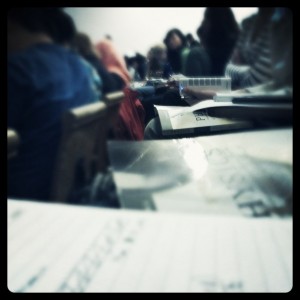
integrated than I thought.
On the positive notes, I was able to learn about the different food aspects and able to implement changes to my own life. Small things like being aware of where my food comes from as well as being more able to recognize food insecurity has given me much greater understanding. However, these changes aren’t my highlight of the course or of the reporter “job”. You see, I’m a large believer in community, or relationship based learning and growth. Whether religiously or academically, I feel that people inevitably have much more meaningful and joyful experiences if done with a community. The course’s highlight for me, and the joy of being a reporter, is being given the opportunity to interact and meet such a diverse group of amazing people. To meet with individuals who care about what they’re doing and can share their knowledge from their invested time. To hear about people’s projects, but more importantly about how individuals themselves think. To add a face, a mind… a soul to the knowledge being passed on. That in itself has proved to be my greatest highlight and pleasure in this course and in my reporter job. So I truly hope that others will take to the opportunity to connect with the amazing individuals around them. As numerous as an autumn rain, so together we’ll be as strong as the ocean striking the shores.
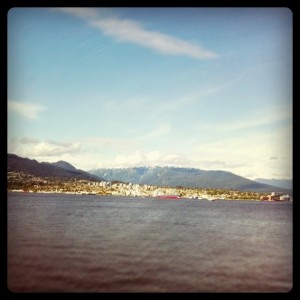
Conclusion:
Windows are made for people to see outside their box into the world around them. Mirrors are for people to look back at the selves and reflect. So if I were to sum up my entire LFS 350 experience into two words. It’d be Windows and Mirrors.
`rtang … out.






